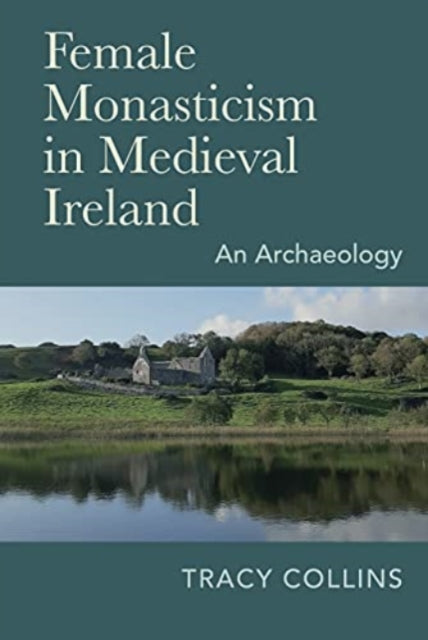Tracy Collins
Female Monasticism in Medieval Ireland: An Archaeology
Female Monasticism in Medieval Ireland: An Archaeology
YOU SAVE £0.56
- Condition: Brand new
- UK Delivery times: Usually arrives within 2 - 3 working days
- UK Shipping: Fee starts at £2.39. Subject to product weight & dimension
Bulk ordering. Want 15 or more copies? Get a personalised quote and bigger discounts. Learn more about bulk orders.
Couldn't load pickup availability
- More about Female Monasticism in Medieval Ireland: An Archaeology
This book explores the archaeology of female monasticism in medieval Ireland, focusing on the twelfth to sixteenth centuries. It discusses the remains of nunneries, including small churches with attached accommodation or separate dwellings, and the daily routine of nuns called the divine office. It highlights the connections between nuns and the local community, and how the nunneries maintained their support and relevance.
Format: Hardback
Length: 672 pages
Publication date: 12 November 2021
Publisher: Cork University Press
This groundbreaking book delves into the rich tapestry of female monasticism in medieval Ireland, spanning from the twelfth to the sixteenth centuries. While nuns have been a part of historical narratives, this work takes a unique approach by examining their archaeological and architectural legacy through the lenses of gender and landscape. It explores the intricate connections between these religious communities and their local surroundings, shedding light on the lifestyles, interactions, and contributions of these women to medieval society.
The book begins by providing a comprehensive overview of the archaeological remains associated with female monasticism in Ireland, as currently understood by scholars. It delves into the physical structures and artifacts that tell the story of these religious communities, including churches, abbeys, priories, and other related buildings. Through meticulous research and analysis, the book offers insights into the layout, design, and function of these monastic establishments, shedding light on the daily lives of the nuns who lived within them.
Furthermore, the book goes beyond the confines of traditional monastic layouts and explores the diverse architectural styles and influences that shaped these nunneries. It examines the interplay between religious beliefs, cultural traditions, and local customs, highlighting how the physical environment influenced the way these women lived and practiced their faith. The book also discusses the role of female religious in the broader European monastic context, drawing comparisons and contrasts with other religious orders and communities.
While some nunneries followed a traditional monastic layout, with a church and other buildings arranged around a central area, this research has revealed that in many cases, nunneries were smaller, more intimate entities. Particularly in urban settings, nuns often resided in small churches with attached accommodations or in separate dwellings. This reflects the changing social and cultural dynamics of the medieval period, where nuns sought to establish themselves in urban centers and engage with the local community in new and innovative ways.
The daily routine of medieval women who became nuns was known as the divine office, a structured and disciplined way of life that encompassed prayer, meditation, work, and community engagement. Nuns celebrated special occasions, such as saints' feast days, with unique rituals and ceremonies that reflected their religious beliefs and traditions. However, it is important to note that the image of all nuns being locked away and isolated from the outside world is a misconception. History and archaeology have shown that nuns had numerous connections with the world outside their monastic walls. They maintained relationships with local communities, benefactors, and other religious figures, fostering collaborations and exchanges that contributed to the growth and vitality of their religious communities.
Nunneries played a crucial role in the social and cultural life of medieval Ireland. They served as centers of learning, prayer, and charity, providing education, healthcare, and support to the less fortunate. Many nunneries also acted as repositories of knowledge, preserving manuscripts, art, and other cultural treasures that would have otherwise been lost to time. Furthermore, nunneries were often places of pilgrimage, attracting visitors from all over the world who sought to witness the lives and teachings of these women of faith.
In conclusion, this book is a pioneering exploration of the archaeology of female monasticism in medieval Ireland. It offers a comprehensive and nuanced understanding of these religious communities, shedding light on their physical structures, daily routines, architectural styles, and social significance. Through its multidisciplinary approach, the book provides valuable insights into the lives and contributions of medieval women who chose to dedicate their lives to religious service. It is a testament to the enduring power of faith, community, and the pursuit of spiritual enlightenment in medieval Ireland.
Weight: 1192g
Dimension: 168 x 242 x 45 (mm)
ISBN-13: 9781782054566
This item can be found in:
UK and International shipping information
UK and International shipping information
UK Delivery and returns information:
- Delivery within 2 - 3 days when ordering in the UK.
- Shipping fee for UK customers from £2.39. Fully tracked shipping service available.
- Returns policy: Return within 30 days of receipt for full refund.
International deliveries:
Shulph Ink now ships to Australia, Belgium, Canada, France, Germany, Ireland, Italy, India, Luxembourg Saudi Arabia, Singapore, Spain, Netherlands, New Zealand, United Arab Emirates, United States of America.
- Delivery times: within 5 - 10 days for international orders.
- Shipping fee: charges vary for overseas orders. Only tracked services are available for most international orders. Some countries have untracked shipping options.
- Customs charges: If ordering to addresses outside the United Kingdom, you may or may not incur additional customs and duties fees during local delivery.


